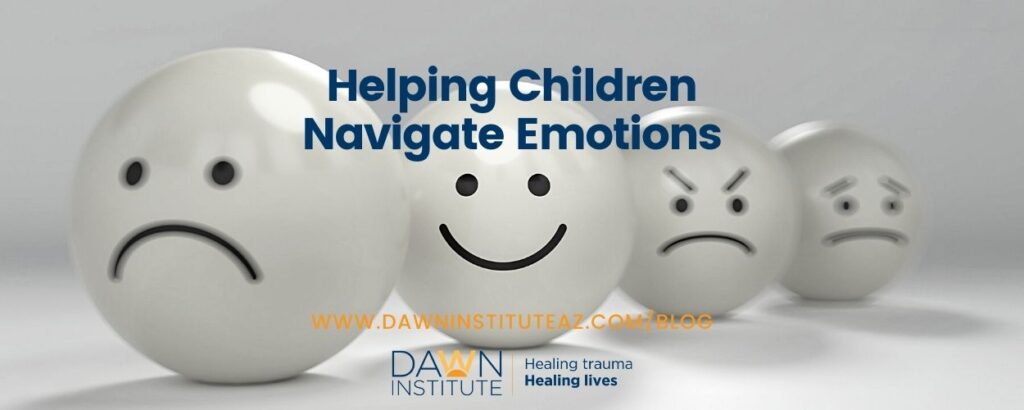Do you remember your parents talking to you about how to feel anger, sadness, or any emotion at that? A common answer I get from clients is “no”. I can definitely say I don’t remember anyone in my family telling me how to feel or express any type of emotion. This is very common. I feel society has engrained in us that there is no need to teach our kiddos how to show and feel emotion.
I’ve worked with many different cultures and all but one has told me showing emotion is a sign of weakness; yet I also hear parents say they want their kiddos to feel and share emotions with them. So how can we expect our kiddos to do something we aren’t teaching them to do or even comfortable with doing ourselves?
Why is it important?
First of all, feelings are natural! Even though they sometimes hurt and can be not-so-fun, they are a part of how our body responds to situations. Second, they are like a volcano and has lava that builds and swells until eventually it explodes and destroys villages and even islands. This is similar to how hiding or running away from our emotions can be. When we push them down and ignore them, eventually we explode hurting other and doing or saying things we regret.
How do we deal?
So now how do we teach our kids to deal with these natural feelings?
- Validate: It’s most important to validate having emotions. Any time kids in my family are angry or sad, even overly excited where they are not able to think outside of the emotion, start with telling them it’s ok to feel that emotion… it’s normal!
- Educate: Explain when they are feeling big emotions, we don’t tend to think clearly and follow up with what you do when you’re feeling that way or ask them, “do you know what I do when I’m feeling like that?” This is the perfect time to teach them how to show their emotions in a healthy way.
- Examples: If they’re angry, talk about healthy ways to be angry, like screaming in a pillow, turning music up loud and singing to it, taking a walk, some deep breaths, drawing, writing in a personal private journal. Whatever tool you as their parent think they would like and would use. You can then teach them about how anger is a protective emotion. This means we’re angry because we are feeling something else, something more vulnerable…like being hurt, feeling alone, being scared. But it’s sometimes a lot harder to talk about those feelings than it is to show your anger. When kiddos, and even us parents are able to really talk about what’s going on, it makes it easier to deal with it and feel better.
- Model: So what if you as a parent struggle with showing or expressing emotions? It is pretty normal because of societal norms. Just remember: monkey see, monkey do! Kiddos are learning more from watching you than they are from what you are telling them. I can’t tell you how many times I’ve had a kiddo or teen say, “well mom/dad does it.” And for them, that makes it ok. So basically, the easiest way to help your kiddo navigate through feeling their emotions, is for you to feel yours. Now every parenting style is different. Some parents are okay letting kiddos see them cry, others, not so much. Either is okay as long as there are healthy boundaries. If you choose to not let your kiddo see you cry, maybe think about how to communicate to them you sometimes cry to (even if you struggle to). This can let them know that it is ok to cry because their parents do it to. It can help make them feel safe to cry around you and to you.
Create a safe place.
We may think our kiddos know we are a safe space but emotions and logic aren’t always simultaneous. We want to open that emotional door to make it easier for them when they see you feel and show emotion in a healthy way, they will emotionally feel comfortable sharing their emotions with you.
To sum everything up, validate, educate, and model. It’s okay if we don’t get it right every time. What is important is that we are present with them and let them know it’s ok to have emotions. Here are few tools if as well for extra help. And as always, we are here to help you and your family through therapy, training, and resources. Contact us anytime.
Amazon Tools:

